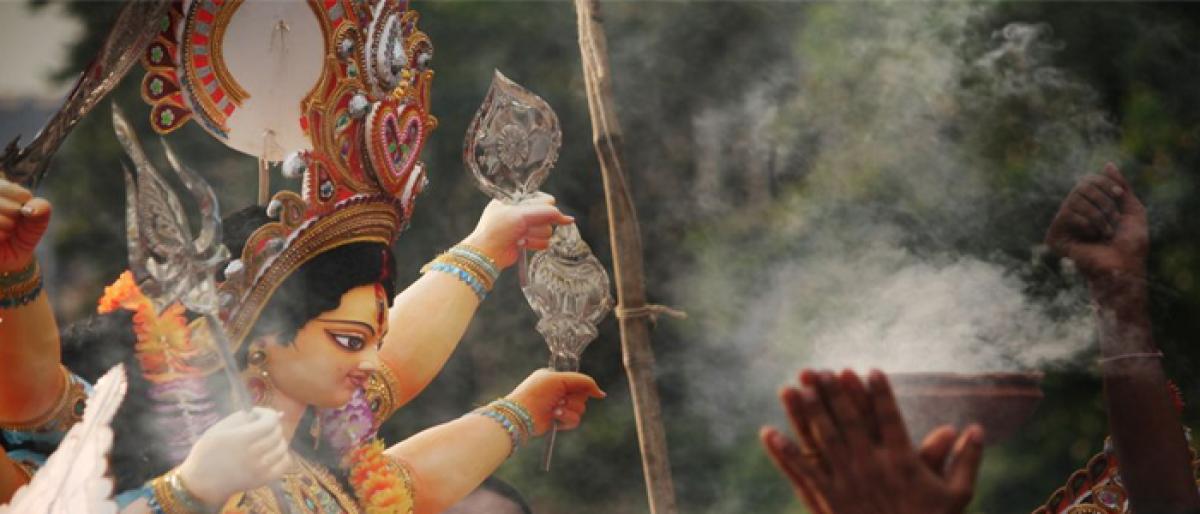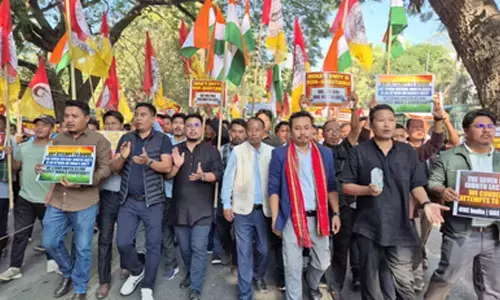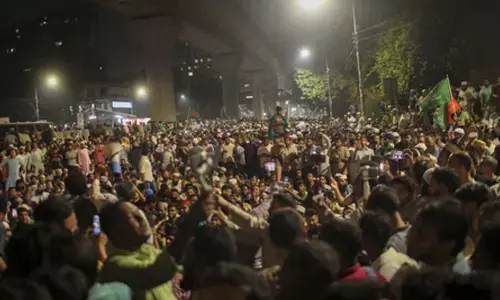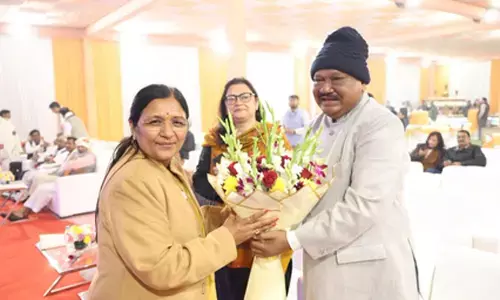The power of shakti

The spiritual import of Navaratri, which literally translated means nine nights is interpreted by seers as worship intended to remove ignorance signified by the darkness of the night, and culminating in the victorious purification of the being on the 10th day referred to as Vijayadashami Shakti, the primordial cosmic energy representing the dynamic forces pervading the universe is re
The spiritual import of “Navaratri”, which literally translated means “nine nights’’ is interpreted by seers as worship intended to remove ignorance signified by the “darkness of the night’’, and culminating in the victorious purification of the “being’’ on the 10th day referred to as “Vijayadashami”. Shakti, the primordial cosmic energy representing the dynamic forces pervading the universe is responsible for both creation and change and is worshipped in the three forms of Durga, Lakshmi and Saraswati.
Renowned Vedanta master Swami Tejomayananda explains the spiritual significance of the festival celebrated with fervour across the country thus “Night time is generally the time when we go to sleep, so the spiritual message is “You have lived long enough in the sleepy ignorance of tamoguna (intellectual inertia and laziness). It is time to wake up now. Navaratri is a time to first remove all negativities by invoking mother Durga, then purifying the mind and cultivating positive virtues by invoking mother Lakshmi, and finally gain spiritual knowledge and transcend all limitations by invoking mother Saraswati,” he says.
Durga, the goddess of power and valour, worshipped as “Mahishashura mardini” or the destroyer of the demon Mahishasura annihilates the dullness of the mind and creates a positive state of mind for knowledge to seep in. Lakshmi does not signify mere material wealth but an abundance of virtues that direct our lives. Saraswati represents the highest knowledge of the self and helps transcend limitations that we are confronted with.
The three goddesses merge to form “Tripura Sundari”, which also symbolises the coming together of the three attributes of Sattva, Rajas and Tamas represented by each form. The sattva form is the nearest to divinity and represents contentment, happiness, compassion, perseverance and spiritual yearning. The tamas component is the basest of the three and its predominance in a person is reflected by laziness, greed and attachment. The rajas component provides fuel to the other two and is responsible for ‘‘action”
According to “Durgasaptashati”- a collection of 700 hymns devoted to goddess Durga, Mahakali, Mahalakshmi and Mahasaraswati are principal forms of the goddess. Mahakali symbolises the “Kalatattva” (Time principle) Mahalakshmi is the symbol of “diktattva’’ (Direction principle) and Mahasaraswati stands for ‘‘gatitattva’’ (speed principle). During “Navaratri” the three forms of the goddesses are worshipped for three days each to reach the state of awakened consciousness on the final day.
The multiple forms of Durga, Lakshmi and Saraswati are but manifestations of different attributes of the one ‘Shakti’ that sustains life. The worship of “Navadurgas” it is said is particularly important as her many forms and actions that root out demons all signify different negative forces vanquished through her energy. Worshipped as Shailaputri, Brahmacharini, Chandraghantethi, Kooshmanada, Skandamatha, Katyayini, Kalaratri, Bhairavi and Siddhidhatri, she provides daring, valour and enterprise required for overcoming obstacles.
Through prayer with focus on the “Seven Chakras’’ beginning with the ‘‘Mooladhara Chakra’’ at the base of the spine and culminating in the “Sahasrara Chakra” at the top of the head, the latent force called the “Kundalini Shakti” that lies dormant at the base of the spine is awakened and transformed into a vital force according to followers of spiritual practices.
From one source or “Shakti” that is responsible for creation, sustenance and destruction, the multiple forms that emerged are but different manifestations of the one life force. Song, dance, chanting of mantras, yagnas, meditation and Yoga, make “Navaratri’’ a time of single-pointed focus on worship of the “divine mother’’. With special attention to “Alankarana” (with the goddess dressed in different coloured sarees and avatars) Naivedyam, (Prasad), dancing and gaiety, the festival signifies happiness and withdrawal from worldly distractions.
“Ya Devi Sarva Bhuteshu”, the Goddess, who pervades all beings in her many resplendent forms reminds devotees of their inner strength and power to fight the demons that inhibit them.















